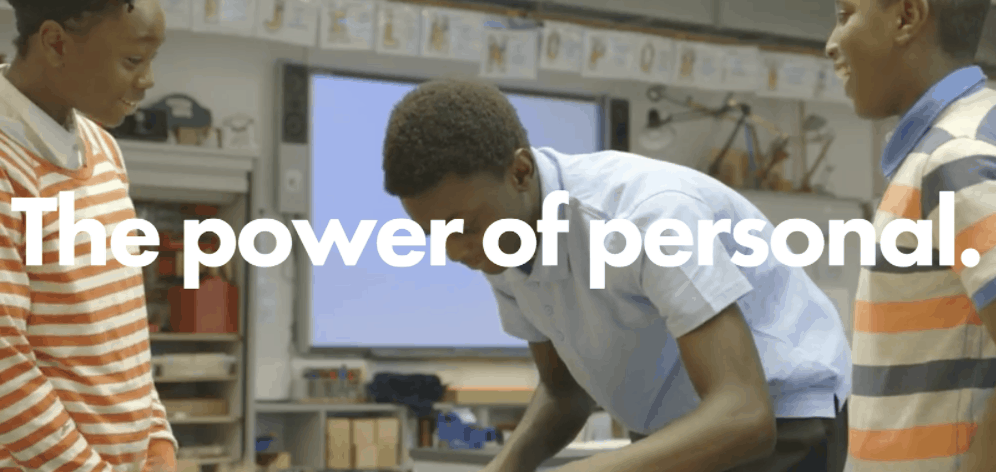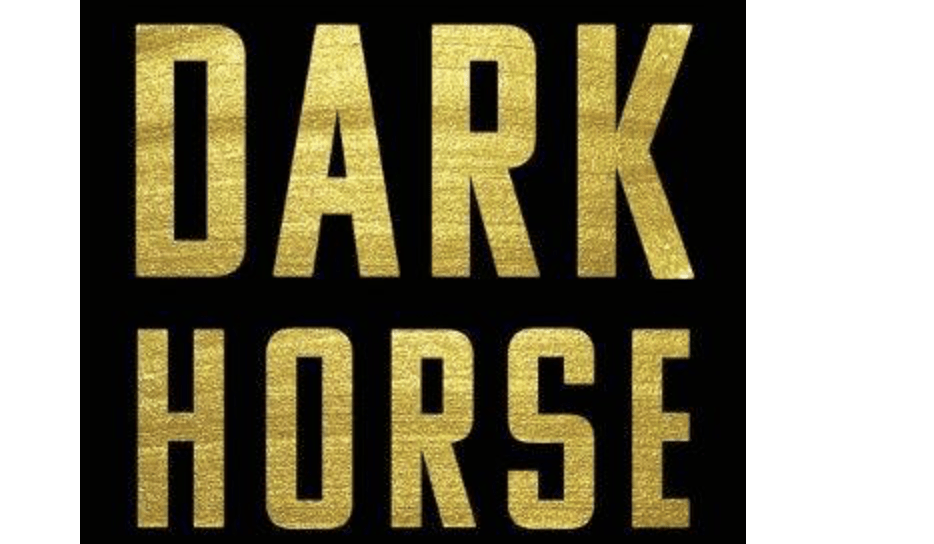Author Todd Rose: Learning is Personal, So is Success

Almost all of the human development systems on planet earth–from preschool to job training–are based on a century-old view of the average person. And they’re wrong.
In his 2013 book, Square Peg, Todd Rose tells the story of how a high school dropout became a Harvard professor in educational neuroscience. He learned four things along the way:
- variability is the rule: perceptions and reactions are much more dynamic and diverse than previously thought;
- emotions are important: emotional states influence learning;
- context is key: circumstances affect the behavior; and
- feedback loops determine success or failure: small changes making a difference.

In his 2016 bestseller, The End of Average, Rose poured gasoline on the personalized learning wildfire sweeping American education. He illustrated that we are frequently measured against the “average person,” judged according to how closely we resemble the norm. “The assumption that average-based yardsticks like academic GPAs, personality tests, and annual performance reviews reveal something meaningful about our ability is so ingrained in our consciousness that we never question it.” But, as Rose argues, the assumption is spectacularly wrong.
“We’re headed for an era of radical personalization,” said Rose. “We’re moving away from feeling anonymous, towards a “me” that matters, in every field,” said Rose.
Rose recognized that with the rise of artificial intelligence we’ve entered a new era. He worries about the transition. He asks “Who will get the benefits?”
To make the case for individuality, Todd Rose and Parisa Rouhani cofounded Populace, a nonprofit dedicated to ensuring that the shift to personalization truly benefits all of society by equipping the public to participate in the change and driving transformation in social systems. In addition to large-scale public engagement work, they also pick projects with partner organizations, typically one or two years in duration, that “will produce bright spots for the public and help drive systems change.”
As part of the partnership, Populace provides these organizations with scientific, practical, and communications support. The well-funded new nonprofit brings investment and capacity to the work.
Redefining Success
Rose and Rouhani have been listening to America, crisscrossing the country, surveying, and holding focus groups. They’ve made some interesting observations.
“Everyone wants individual patients to benefit from personalized medicine,” said Rose. “Yet when you talk about education and human potential, they get that their kids would benefit but when asked if everybody would benefit, responses plummet, most people don’t believe that all kids wouldn’t benefit.”
There are two likely reasons for this disturbing belief about other people’s children. First, speculates Rose, most people don’t think that everyone is capable. And, second, the current social system is perceived to be zero sum (e.g., there is one valedictorian and entrance to the best universities is highly limited).
Like the big social platforms, Rose and Rouhani are “obsessed about the promise and pitfalls of using data to understand individuals.” What makes them different, said Rose, is that they come down firmly on the side of people. “We are not interested in using data and insights from the science of individuality simply to make systems smarter about individuals; we want to put this knowledge directly in the hands of the public so that they have greater control over their own lives.”
The listening tour yielded shifting views on success. Sixty years ago, when researchers starting studying this stuff, American’s held an industrial model of success based on wealth, status, and power. But people today want more meaning, purpose, and fulfillment–a broader conception of success. What parents want most for their children is a sense of confidence. This is particularly true of parents with middle-grade children.
Personal Success Project
In addition to his listening tour, through his laboratory at Harvard Rose and his research director, Ogi Ogas have been studying iconoclastic success stories, people that charted their own path to impact. These dark horses achieved unexpected success.
 Rose and Ogas discovered a reliable path to excellence that is rooted in your own individuality. It begins by knowing what personally drives you, making choices around that priority, and building a pattern of strength around the things you care about most. Like the survey results, these dark horses prioritized fulfillment.
Rose and Ogas discovered a reliable path to excellence that is rooted in your own individuality. It begins by knowing what personally drives you, making choices around that priority, and building a pattern of strength around the things you care about most. Like the survey results, these dark horses prioritized fulfillment.
A new book by Rose and Ogas, Dark Horse (HarperCollins, 10/18), summarizes hundreds of these stories of success. They conclude that a fulfilling life is not dependent on connections, money, or standardized test scores. The secret is consistently making choices that complement their unique interests and abilities. In other words, it is not the pursuit of excellence that leads to fulfillment but rather the pursuit of fulfillment that leads to excellence.
Rose and I advise a couple important initiatives including the Digital Promise Learner Positioning System (see background paper) and the recently announced Whittle School & Studio, a global effort to personalize learning for future leaders.
Todd is the most important advocate of appreciating individuality. He has helped millions of parents and teachers understand how to better help children learn and grow–and helping a generation of young people become more aware of their talents and passions. His new research suggests this is not just important for learning but the key to a life of purpose, authenticity, and achievement.
For more see
- Starting Over With Personalized Learning
- Nobody is Average, Every Student Deserves Personalized Learning
This post was originally published on Forbes.
Stay in-the-know with all things EdTech and innovations in learning by signing up to receive our weekly Smart Update.





teacher123122
Hi tom! Quite interesting!
M_Osborne
Dear Tom,
The author of The End of Average—Todd Rose—criticizes the industrial model of education by asserting that structuring education around the “average” fails to benefit all individuals, because all students are different. Research backs this notion; tailoring instruction to account for individual differences in knowledge and cognitive abilities improves learning by reducing cognitive load and increasing interest (Hattie, 2009; Kester et al., 2005; Pressley et al., 1987). Most generally, Rose’s premise is well supported.
Rose advocates for the use of technology to achieve personalized learning and individualization. While technology exists that allows for such individualization, it is important to realize that the results have varied greatly depending on the specifics of implementation. According to a recent review of more than 60 personalized schools, some programs have seen remarkably positive academic results in practice—with effect sizes well over 1.0—but others have yielded negative results that lowered student achievement, even when using similar practices and programs (Pane et al., 2015).
However, such achievement variability may not bother Rose. He emphasizes that society should abandon the focus on standardized test scores, claiming they do not accurately measure true potential or excellence. He stresses the importance of learner perception, by focusing on individual interest, passion, and the pursuit of fulfillment. While personalized learning attempts to improve learner perception by accounting for interest and increasing autonomy, there has also been wide variability in learning perceptions in applied personalized models. Some programs report great increases in perception and satisfaction, while others have led to drastic decreases (Pane et al., 2015; Penuel & Johnson, 2016). For example, the personalized program Teach to One, which had seen promising academic and perceptual results in 2014, recently expanded to two California schools and failed miserably. The program resulted in a 413% increase in the number of students who reported “hating” math compared to the previous year when the schools employed traditional direct instruction, which led to the cancelation of the program after intense criticism (MVPS, 2017). Thus, it seems the specifics and context of implementation are of particular importance, even for learning perception.
Rose also highlights two possibilities as to why parents think not every child would benefit from individualized learning. He notes, either they believe that not every student is capable, or they consider the current educational system to be zero-sum (one person’s gain is equivalent to another’s loss). Regardless of these possibilities, parents are justified in their skepticism at the current time, as most personalized models seem to mostly benefit elementary-middle school aged, low achieving, and disadvantaged students, while older, higher achieving students often see little to no perceptual or academic gain relative to direct instruction (Pane et al., 2015; Ready, 2015). Therefore, in addition to school context, the benefits of applied personalized learning also seem subject to student characteristics.
Research does suggest that Rose is well supported with regards to his emphasis on student voice. Students report wanting to have a greater “say” in their learning, which is often realized through frequent advising, and collaborative setting of achievable—yet challenging—goals that lead to increased academic achievement (d = 0.53), motivation, and learning perception (Hattie, 2009). Furthermore, such methods that integrated student voice were identified as a key factor in schools that saw the greatest success (Pane et al., 2015). As such, further use of student voice in practice is warranted.
I applaud the initiative of the mentioned Digital Promise Learner Positioning System for declaring its plan to conduct further research on factors that most benefit learning, and its development of programs that are supported by both laboratory and practical results. However, I advise against developing more versions of virtual personalized learning plans, as the market is already oversaturated with complex models that have not been adequately tested outside of the laboratory (Al-Muhaideb et al., 2011; Chen, 2008; Lee, 2012; Lin et al., 2013; Sunkara & Rajasekhara, 2017; Sweta & Lal, 2017; Yu-Shih et al., 2016). Any given model is of little value until it is practically reviewed.
The main purpose of this post is to raise caution regarding Rose’s general call for personalized learning without specifically defining its features and the targeted population. Before suggesting any major policy changes, Rose ought to narrow his focus and formulate a descriptive list of research-based factors to implement and evaluate in pilot educational programs. There is little point in further debating the theory behind the methods without critically examining their practical utility. Thus, published studies are needed to define which specific features are and are not effective. Everyone can agree that personalized learning is a desirable ideal, but much work is needed in order to determine how to make personalized learning and individualization an attainable and beneficial reality for everyone.
References:
Al-muhaideb, S., Menai, M. E., & Bachir. (2011). Evolutionary computation approaches to the curriculum sequencing problem. Natural Computing, 10(2), 891-920. doi: 10.1007/s11047-010-9246-5
Chen, C. (2008). Intelligent web-based learning system with personalized learning path guidance. Computers and Education, 51(2), 787-814. doi: 10.1016/j.compedu.2007.08.004
Hattie, John. (2009). Visible Learning: A Synthesis of Over 800 Meta-Analyses Relating to Achievement. doi: 10.4324/9780203887332.
Kester, L., Kirschner, P. A., and van Merriënboer, J. J. G. (2005). The management of cognitive load during complex cognitive skill acquisition by means of computer simulated problem solving. Br. J. Educ. Psychol. 75: 71–86.
Lee, Y. (2012). Developing an efficient computational method that estimates the ability of students in a web-based learning environment. Computers & Education, 58(1), 579-589. doi: 10.1016/j.compedu.2011.09.008
Lin, C. F., Yeh, Y., Hung, Y. H., & Chang, R. I. (2013). Data mining for providing a personalized learning path in creativity: An application of decision trees. Computers & Education, 68, 199-210. doi:10.1016/j.compedu.2013.05.009
Mountain View Public Schools. (2017, January 6). Teach to One: Parent's Survey & Review. Retrieved from http://cdn8.openculture.com/wp-content/uploads/2017/01/06123735/TTOSurveyResults-2.pdf
Pane, J. F., Steiner, E.D., Baird, M.D., & Hamilton, L.S. (2015). Continued progress: Promising evidence on personalized learning. Santa Monica, CA: RAND Corporation. Retrieved December 15, 2015 from http://www.rand.org/pubs/research_reports/RR1365.html
Penuel, W. R., & Johnson, R. (2016). Review of continued progress: Promising evidence on personalizing learning. National Education Policy Center Boulder.
Pressley, T. ,Cariglia-Bull, S. Deane, W. (1987). Schneider Short-term memory, verbal competence, and age as predictors of imagery instructional effectiveness. Journal of Experimental Child Psychology, 43, 194-211
Ready, D. (2014, December 4). Student mathematics performance in the first two years of teach to one: Math (Rep.). Retrieved April 20, 2018, from Columbia University, Teachers College website: http://www.newclassrooms.org/wp-content/uploads/2016/09/Teach-to-One_Report_2013-14.pdf?pdf=2014TCreport
Sunkara, V. M., & Rajasekhara, R. K. (2017). A learner-centric personalized and adaptive E-learning framework for higher education. International Journal of Advanced Research in Computer Science, 8(5).
Sweta, S., & Lal, K. (2017). Personalized adaptive learner model in E-learning system using FCM and fuzzy inference system. International Journal of Fuzzy Systems, 19(4), 1249-1260. doi: 10.1007/s40815-017-0309-y
Yu-Shih, Lin, Chang Yi-Chun, and Chih-Ping Chu. (2016). An innovative approach to scheme learning map considering tradeoff multiple objectives. Journal of Educational Technology & Society 19, (1): 142-157.